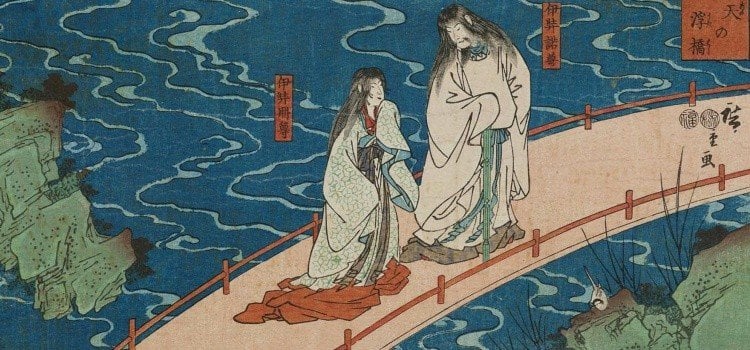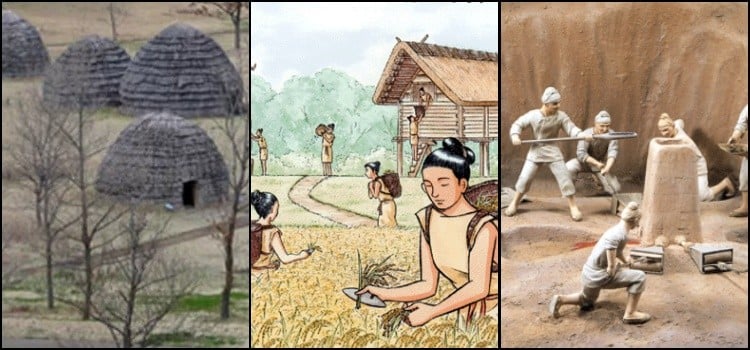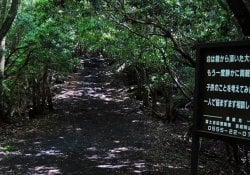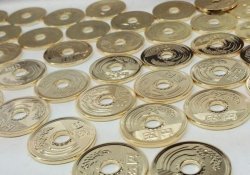The Jomon and Yayoi periods were important periods in Japanese history. The Jomon and Yayoi people were the cradle of Japanese society as we know it.
Although the Japanese did not settle in Japan until the 3rd century BC, humans lived in Japan from around 30,000 BC Japan was not always an island. During the Ice Age, it was connected to the Korean Peninsula via a land bridge.
The main Japanese islands were connected. The island of Kyushu in the south was connected to the Korean Peninsula, while the island of Hokkaido in the north was connected to Siberia.
Stone Age humans crossed this land bridge in the same way as those who crossed the Bering Strait to the Americas. The immigrations took place around 30,000 BC from the flint tools they left behind.
The Jomon and Yayoi peoples emerged around 13,000 BC and 300 BC, respectively. The influence of these peoples was important to Japan as both were the pillars of Japanese society.
Jomon Period (13,000 BC - 300 BC)
Traces of Paleolithic culture, primarily stone tools, occur in Japan from 30,000 BC onwards. The initial phase of the Jomon period began while Japan was still connected to mainland Asia as a narrow peninsula.
The glaciers eventually melted after the end of the glacial period. Consequently, sea levels rose, separating the Japanese archipelago from the Asian mainland.
Kyushu, about 190 kilometers from the Korean Peninsula, was close enough to be intermittently influenced by continental developments. But far enough away for the peoples of the Japanese islands to develop.
Within the archipelago, the vegetation was transformed until the end of the Ice Age. Many native tree species such as beeches, chestnuts and oaks have produced edible nuts and acorns. These provided plentiful sources of food for humans and animals.
The Jomon people lived in small communities, mostly in dwellings near inland rivers or along the coast. The Jomon people lived by hunting, fishing and gathering.
Excavations by archaeologists suggest that an early form of agriculture was practiced until the end of this period.
The distinctive Jomon pottery, first made during the Early Period, was molded from unrefined clay.
As the potter's wheel was unknown, manual methods were used by the Jomon. Particularly, the winding method. That is, clay was prepared in the form of a rope and wound in an upward spiral.
As the climate cooled and food became less plentiful, the population declined dramatically. As people gathered into smaller groups, regional differences grew.
As part of the transition to the Yayoi period, it is believed that domesticated rice, grown in dry beds or swamps, was introduced to Japan at this time.
Yayoi Period (300 BC - 250 AD)
Although metalworking was introduced towards the end of the Jomon Period, the Yayoi people continued to use stone tools and objects at the beginning.
Later, stone tools were eventually replaced by weapons, armor, and trinkets made of bronze and iron.
With the introduction of rice farming, the proper tools also had to be developed. Hoes and shovels that had stone blades and heads were replaced with metal. Irrigation techniques were developed during this period for rice paddies and other crop fields.
With the introduction of agriculture, the diet and lifestyle of the Yayoi people changed dramatically as they were now permanently settled and most of their food was grown locally. Hunting is no longer the main source of food.
As in the Jomon Period, pottery was also made by rolling clay, smoothing it, and then heating it. But the similarities end there, as Yayoi pottery was more functional and less porous.
Eventually, the Yayoi period would mark the transition of Japanese society. From bands of hunters with little contact to an agrarian, metallurgical, political and militarized society.
The Yayoi laid the foundations for what would now be known as medieval Japan with the introduction of rice cultivation and metallurgy. This change allowed population expansion and increased production of weapons and armor for military purposes.
The development of clans, as well as the class system, would eventually lead to the daimyos, samurai and the Chrysanthemum Throne, with a line of emperors that would remain intact to this day.







